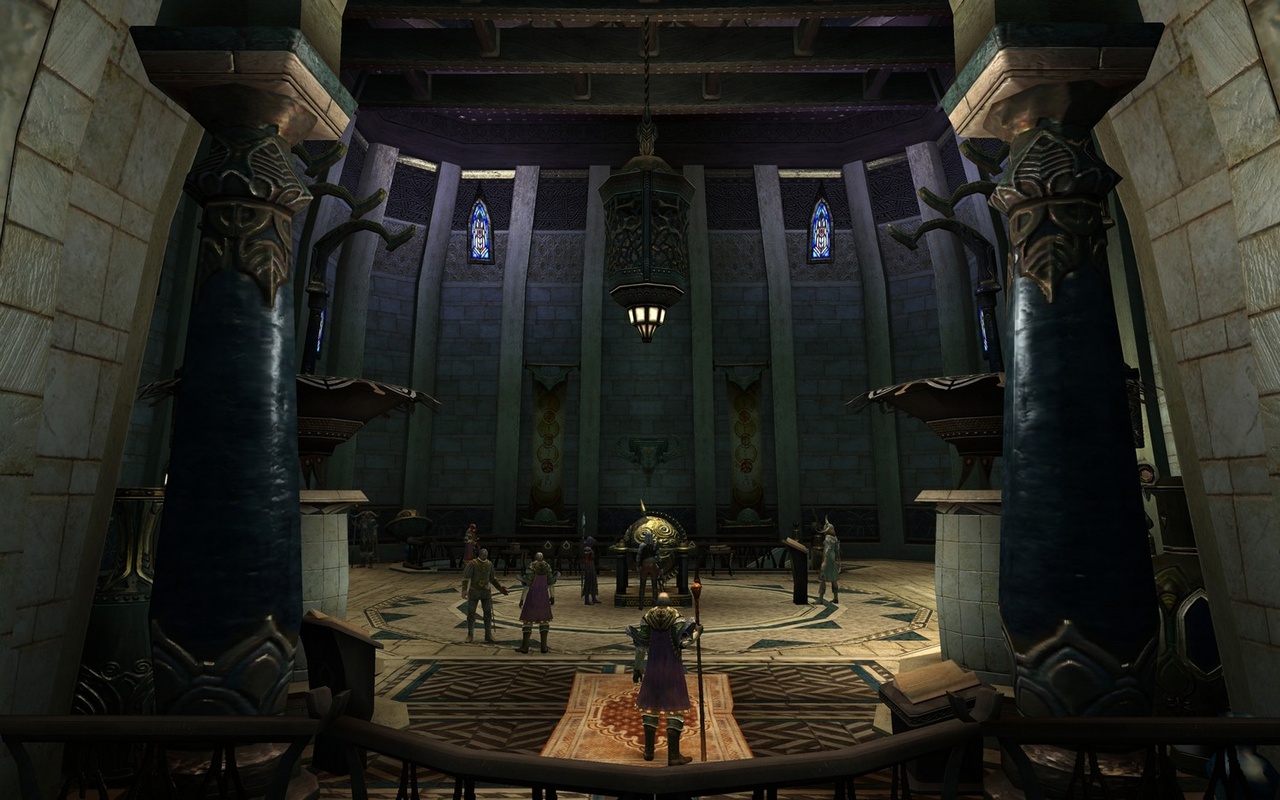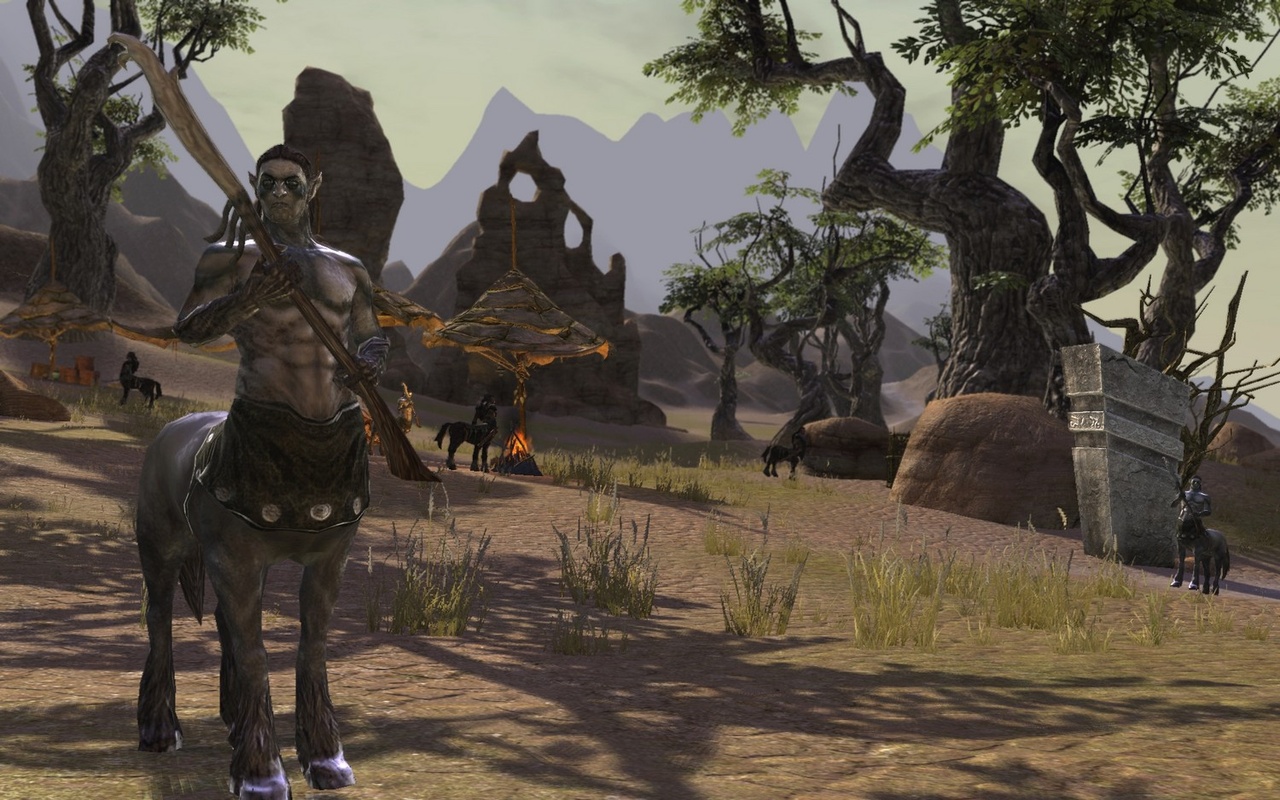We Just Played Rift: Planes of Telara (at E3 2010)
We take an updated look at this unusual fantasy-themed online game and also take a newly created character out for a test drive.
If this loud, hot, video-game-filled convention center doesn't mean that it's E3 2010, then it must be like some kind of loud, hot, video-game-filled dream. On an entirely unrelated note, we just took an updated look at Rift: Planes of Telara, the upcoming fantasy-themed massively multiplayer online role-playing game from Trion Worlds. As we've mentioned in our previous coverage, Rift will take place on the shattered planet of Telara, a world that has literally been smashed to pieces by the machinations of a group of evil ancient dragons. While the game has lots, and lots, and lots, and lots of lore, backstory, and funny names for things, the bottom line is that the game will feature a lot of dynamically generated content that should offer you lots of different things to do while encouraging (but not forcing) you to play well with others.
We started our session by creating a new character from the game's "Defiant" faction. The game will have two different factions that will oppose each other in player-versus-player combat, and each will have three different playable humanoid races with different racial abilities, off-color skin, and nonstandard fantasy names (don't look for any orcs here, though there will be elves). The two Defiant races available at E3 are the ethians, human-looking beings who are allegedly descended from the sorcerer kings who created Telara; and bahmi, a race of half-human, half-elemental beings. After choosing to play as a bahmi character, we then moved on to profession.
Rift will feature four basic character callings: warrior, rogue, cleric, and mage. But it will have multiple character professions along these lines, including different base flavors of each. For instance, the inquisitor, the class we picked, will be a spellcaster with some healing abilities but specialized in dealing damage. Our level-one bahmi inquisitor started off in humble robes carrying a quarterstaff in a dark, moonlit purple forest--a limbo world not of Telara that serves as the game's tutorial area. We were given a simple quest by a clearly labeled quest giver to go kill some bugs--something we had little trouble with between zapping it with our introductory damage spell and toggling on auto-attack to repeatedly strike the pests with our staff.
Being familiar with games like World of Warcraft, EverQuest, and all the rest, we could see where this was headed, so we opted to switch back to a hands-off demo to watch a higher-level character (a level-21 inquisitor) take on a new adventure. Watching a higher-level character in action gave us a chance to see the game's modified "multiclass" system, which has been radically overhauled since last year's E3. If you recall, at last year's E3, Telara was presented as a game that would let you freely change classes between totally unrelated professions and advance in each. That system has been revised to instead let each base calling have three different skill specializations, each of which is a functionally complete character profession on its own. For instance, cleric-class characters may choose from both healer and inquisitor skills (as well as skills from a third, as-yet-unnamed cleric subclass) to create a cleric character to their own personal tastes. As a matter of fact, as long as your character invests the time, training, and cost of in-game currency to unlock your desired skills from each of the three subclasses, you can mix and match them at will. You can even save your favorite skill loadouts to templates that you bring with you to raids, PVP, and other situations.
We then watched the inquisitor take on an interdimensional tear--a glowing anomaly floating in the air that randomly spawns throughout the world and can be activated to start a dimensional invasion from a different plane that you and other players must fight. The first tear was an invasion from the plane of life and included the same sort of green, plantlike critters we saw in our last preview. The second such encounter was a "rift," another sort of interdimensional portal that will, if left untended, erupt by itself into its own invasion. This rift was from the plane of death and summoned numerous undead soldiers into battle. Thankfully, at this point, the battle was joined by other players, so our inquisitor character primarily held back and blasted the fiends from a distance. As we've mentioned previously, both tears and rifts act as opportunities for players to play Rift's social quests--an evolved version of Warhammer Online's public quests to which all players in an area may contribute without having to join a formal group. These social quests will continuously spawn waves of enemies (and if you're fast enough to defeat them, an extra bonus wave or two, as well) that you and anyone in the area must defeat. Participating in these social quests is intended to be attractive to players because they spawn new enemies to fight, as well as bonus environmental items to aid in battle (in the case of the death rift, gray stone urns which, when clicked on, temporarily increased our character's damage output) and successively better loot with each continuing wave.
Rift: Planes of Telara's unorthodox approaches to generating playable content and player grouping are absolutely steps taken in a different direction from what you'd usually expect in such a game. It's scheduled to launch next year.
Got a news tip or want to contact us directly? Email news@gamespot.com



Join the conversation